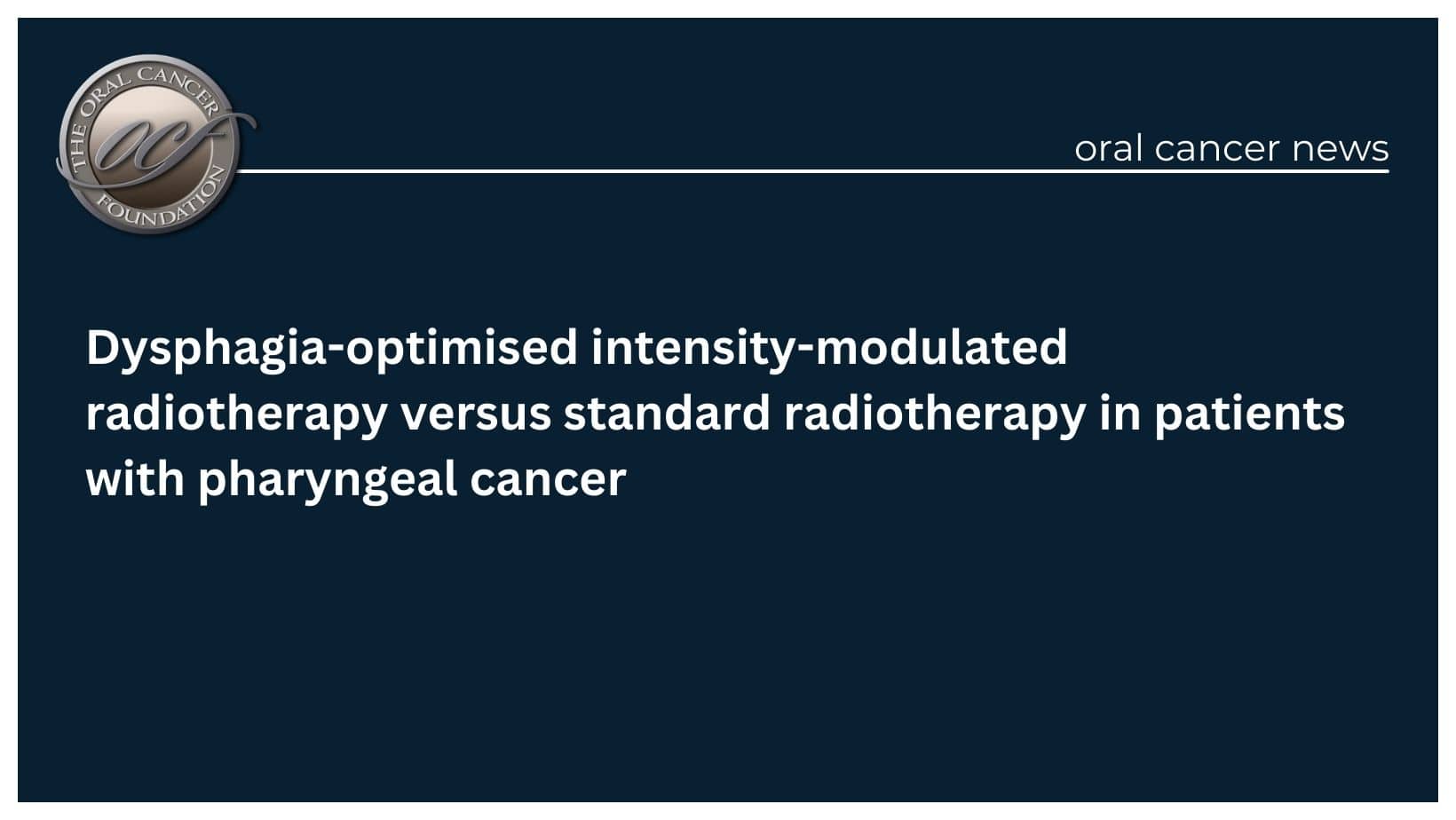Christopher Nutting and colleagues recently reported the results of a randomized trial comparing dysphagia-optimized intensity-modulated radiotherapy (DO-IMRT) with standard IMRT in patients undergoing radiation treatment for head and neck cancer.
Some forms of DO-IMRT, which involve actively reducing the radiation dose received by the pharyngeal constrictor muscles, have been considered standard in many institutions and collaborative trial groups for some time now, and the authors should be congratulated on providing level 1 evidence for this practice.
The primary study endpoint was the difference in the MD Anderson Dysphagia Inventory (MDADI) composite score 12 months after completing radiation treatment. The unadjusted and adjusted analyses favored the DO-IMRT group, with differences in MDADI score of 7·2 points (77·7 vs 70·6, p=0.037) and 9·8 points (p=0.0030), respectively, with neither meeting the pre-specified clinically meaningful change of 10 points. The authors concluded that these differences, supported by other patient and clinician-reported measures, are likely to be clinically relevant, a position with which we agree, and one supported by distribution-based clinically meaningful change calculations.
Although a difference of 10 points has been shown to represent a sizeable clinical difference (feeding tube dependence or aspirating vs. not having either),the smallest difference remains uncertain, clinically crucial to patients, and pivotal to interpreting contemporary head and neck cancer trials.
The current study highlights the value of conducting high-quality patient-reported outcome research by evaluating an intervention related to the measured construct. The MDADI composite measure, however, captures a broader, multi-dimensional eating and swallowing-related quality of life construct beyond the physical act of swallowing and is influenced by non-swallowing toxicities, such as dysgeusia, pain, and salivary gland changes, which is a subtle but essential distinction. The hypotheses and interpretations of some recent clinical trials have referenced swallowing function. The MDADI was not designed to measure functioning, which requires other measures, such as videofluoroscopy.
Department of Radiation Oncology, All India Institute of Medical Sciences, New Delhi 110029, India
1 Nutting C, Finneran L, Roe J, et al. Dysphagiaoptimised intensity-modulated radiotherapy versus standard intensity-modulated radiotherapy in patients with head and neck cancer (DARS): a phase 3, multicentre, randomized, controlled trial. Lancet Oncol 2023; 24: 868–80.
2 Ang KK, Harris J, Wheeler R, et al. Human papillomavirus and survival of patients with oropharyngeal cancer. N Engl J Med 2010; 363: 24–35.
3 Bahl A, Kumar P, Dar L, et al. Prevalence and trends of human papillomavirus in oropharyngeal cancer in a predominantly north Indian population. Head Neck 2014; 36: 505–10.
4 Hutcheson KA, Barrow MP, Lisec A, Barringer DA, Gries K, Lewin JS. What is a clinically relevant difference in MDADI scores between groups of head and neck cancer patients? Laryngoscope 2016; 126: 1108–13.





